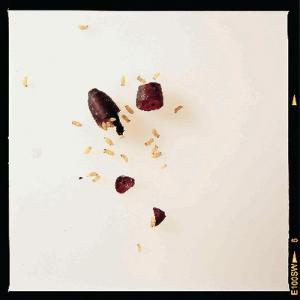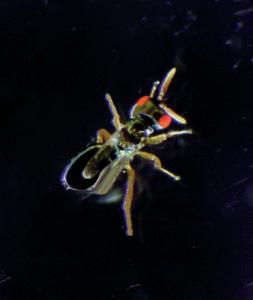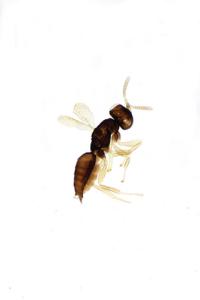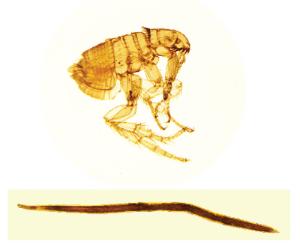How to teach with Nasonia: A free guide for working with and caring for your live materials
Download this guide for the facts on Nasonia lifecycle and instructions for culturing and handling Sarcophaga and Nasonia.
Fill form to unlock content
Error - something went wrong!
Get Your Free Guide
Thanks! Enjoy your download!
EnjoyIntroducing Ward’s How to Teach with Live Materials Series
Curious about teaching with live critters in your classroom, but not sure where to start? Or are you ready to incorporate a new type of specimen in your life science lessons but not sure which one is right for you? We’re here to help with our all-new How to Teach with Live Materials series of free guides. These free downloadable guides are packed with information and expert guidance from our in-house live materials lab technicians and biologists. You’ll get a thorough introduction to the wide world of living specimens and learn how to use them in your classroom to teach hands-on lessons that explore everything from life cycles, animal behavior, comparative anatomy, physiology, bio-chemical processes, disease, health, nutrition, and more!
Read on to learn all about teaching with Nasonia, and discover our other guides in this series at Ward’s World! Check back for more coming soon.
Middle/High School
How to Teach with Nasonia
Nasonia vitripennis is a small parasitic wasp involved in a symbiotic relationship with a host organism known as Sarcophaga bullata, or a flesh fly. This creature lays its eggs inside the Sarcophaga pupal casing. As the Nasonia eggs hatch, the larvae eat the host from the inside out. Ewww! The Nasonia’s unusual reproductive behavior puts the “creepy” in creepy crawlies. But the species and other parasitoids play a critical role in keeping insect populations in check! Goodbye, fly!
Nasonia are the “lab rats” of parasitoid wasps and are a favorite subject of genetic, ecological, developmental, and behavioral research. It’s the only parasitic wasp to have its entire genome sequenced.1 Its small size, short life cycle, and ability to produce many offspring make Nasonia perfect for classroom lessons about animal behavior and genetics. Many scientists prefer to work with Nasonia over other research organisms because they’re very simple to culture, handle, and maintain.
Do relations between species always result in harm?
Symbiosis is a close relationship between two species in which at least one species benefits. While the Nasonia’s breeding behavior doesn’t work out so well for flies, in nature, symbiotic relationships may be positive, negative, or neutral. There are three basic types of symbiosis: mutualism, commensalism, and parasitism.
Mutualism
Mutualism is a symbiotic relationship where two organisms of different species "work together," each benefiting from the relationship. One example of a mutualistic relationship is the oxpecker (bird) and large land animals. Oxpeckers land on rhinos or other large animals, such as cattle, giraffes, and zebras, and eat ticks, larvae, and other parasites that live on their skin. The oxpeckers get a tasty meal, and the beasts get pest control.
Commensalism
Commensalism is a symbiotic relationship where one species benefits while the other species is not affected. The commensal organism (the beneficiary) may depend on its host for food, shelter, support, transport, or a combination of these. Three well-known examples of commensalism are the remora (family Echineidae) that rides attached to sharks and other fishes, mites that attach themselves to plants and animals, and hermit crabs use the shells of dead snails for homes.
Parasitism
Parasitism is a symbiotic relationship in which one species (the parasite) benefits while the other species (the host) is harmed, manipulated, or killed.
Some parasites live on the surface of their host (ectoparasites), while others live inside their host (endoparasites). They may enter the host through the air, contaminated water or food, or feces. All viruses and many bacteria are parasites. Viruses live inside cells of the host’s body. Diseases caused by viruses include measles, chickenpox, and AIDS. Parasitic bacteria cause diseases ranging from acne to the plague.
Some parasites, like the parasitoids, kill their host, but most don’t. Evolution 101, “don’t bite the hand that feeds you.” If a parasite kills its host, the parasite is also likely to die, too, duh! But try telling that to the dastardly extraterrestrial in the sci-fi movie, Alien! That’s why in most cases, parasites cause relatively minor damage to their host.2
Download the Working with Nasonia care guide above to help you create mutually beneficial hands-on activities that excite your students while making lesson planning easier for you. Working with Nasonia introduces students to the fundamentals of the Sarcophaga and Nasonia life cycles, haplodiploid inheritance, genetics, and more!
Download the Working with Nasonia guide at the top of this page to help you get started. For extra help caring for your live Nasonia, check out our Nasonia Live Materials Care Guide.
About Ward’s Science Live Materials
Ward’s Science is committed to supplying high-quality specimens that support a wide variety of classroom activities and research. Because we cultivate and care for all of our live materials in our onsite labs, we ensure that your materials are always fresh, healthy, and delivered on time.
Discover our wide selection of live materials for teaching science here.
For more information about how to care for live materials, visit our Live Material Care Guide page; it has instructional and informational literature sheets for the most popular live specimens in our collection. From algae to vertebrates and everything in between, you will find the facts and instructions necessary to properly provide care for your live specimens and enrich your lessons with additional background information.
Our expert biologists and lab technicians are here to help with questions or one-on-one support with your live materials—Email sciencehelp@vwr.com for personalized support, custom orders, and more.
References: 1.Researchgate Publication: Venom Proteins of the Parasitoid Wasp Nasonia vitripennis: Recent Discovery of an Untapped Pharmacopee. 2. LiveScience: The 10 most diabolical and disgusting parasites
Recommended products:
[StartProductBlock]

Ward's® Using Nasonia to Teach the Scientific Method Lab Activity
Guides students through the inquiry process. Students discover the relationship between Nasonia and Sarcophaga. An excellent study in parasitism.
[EndProductBlock]
[StartProductBlock]

Ward's® Inheritance Patterns In Nasonia Lab Activity
Students with advanced knowledge of genetics determine if a gene is dominant, recessive, or sex-linked. Students design an experiment to test their hypothesis and set up a control experiment.
[EndProductBlock]
[StartProductBlock]

Nasonia, Adult Composite Slide
Adult male and female in lateral view. Identifying features clearly distinguishable. Rigorous quality control standards.
[EndProductBlock]
[StartProductBlock]

Veterinary Parasite Slide Set
Common parasites in the veterinary field. Set includes Protozoa (6); flatworms (5); roundworms (3); arachnids (5); insect (1).
[EndProductBlock]
